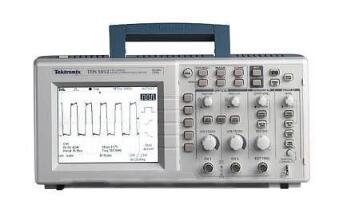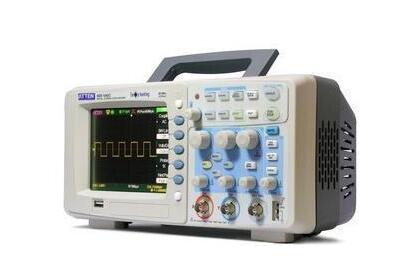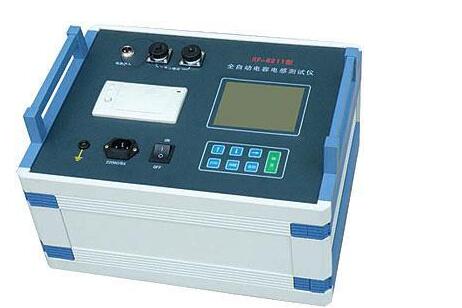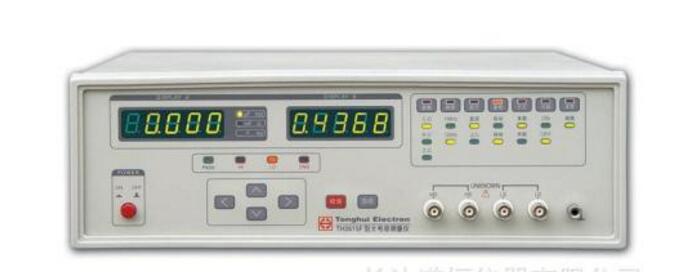**Can Domestic Oscilloscopes Be Used?**
The three main performance indicators of an oscilloscope are bandwidth, sampling rate, and memory depth. The higher these values, the more expensive the device tends to be.
Domestic low-end oscilloscopes are generally well-produced with no major technical issues. However, high-end models—especially those with internal acquisition cards and other core components—are still difficult to manufacture domestically. While the technology itself may not be a huge barrier, the equipment required to produce these core components is a significant challenge. Without access to advanced manufacturing tools, even if the technology is available, the quality of the final product may not meet the standards needed for high-end applications.
Some might argue that if the production equipment isn't available, you can just “wrap it up†or find a workaround. But in reality, this is a real issue. Certain key equipment is subject to export restrictions, especially from Western countries. Even if such equipment were available, the cost of producing high-quality components would be extremely high, and Chinese manufacturers may not have the demand or resources to justify it.
So, in short, domestic oscilloscopes can be used depending on your needs. If you're looking for basic functionality and don’t need cutting-edge performance, they can be a good option. However, for high-precision measurements, imported oscilloscopes may still be the better choice. It all comes down to your budget and the level of accuracy you require.

**Which Kind of Domestic Oscilloscope Is Better?**
Oscilloscopes can be either analog or digital.
Analog oscilloscopes are often produced by companies like Jiangsu Luyang, Suzhou Guwei, and Shanghai Green. They are cost-effective and widely supported with local maintenance services. However, after-sales support can be a bit tricky. Shanghai New Construction is an older manufacturer that primarily serves its local market. Aetna does not produce analog oscilloscopes anymore, as I’ve visited their factory directly.
Digital oscilloscopes include brands like Puyuan, Luyang, Youlide, and Antaixin. Among them, Puyuan and Luyang are considered to offer better quality at a slightly higher price. Unitek offers more affordable options, but it may lack some advanced features like automatic capture of small signals.
If you're looking for an analog model, Green and Luyang are recommended. For digital oscilloscopes, Puyuan and Luyang are solid choices.

**How to Choose an Oscilloscope**
1. **Understand the Signals You Need to Test**
Before purchasing, think about what signals you want to observe. Are they repetitive or one-time events? What is the frequency range, rise time, and signal characteristics? Do you need to trigger on specific pulse widths or narrow pulses? How many signals will you be displaying at once? These factors will help determine the right oscilloscope for your needs.
2. **Choose the Right Core Technology: Analog (DRT), Digital (DSO), or Digital Phosphor (DPO)**
Analog oscilloscopes are known for their simplicity and affordability, but they are becoming less common. Digital oscilloscopes now dominate due to their advanced measurement capabilities and ease of use. DPO (Digital Phosphor Oscilloscopes) combine the best of both worlds, offering fast waveform updates and detailed signal analysis.
3. **Determine the Required Bandwidth**
Bandwidth refers to the highest frequency the oscilloscope can accurately measure. If the bandwidth is too low, the signal may appear distorted, and important details could be lost. Always choose an oscilloscope with a bandwidth that matches your application’s requirements.
4. **Consider the Sampling Rate**
The sampling rate determines how many data points per second the oscilloscope captures. A higher sampling rate results in a clearer and more accurate representation of the signal, reducing the chances of missing critical information.
5. **Check the Waveform Update Rate (Screen Refresh Rate)**
This refers to how quickly the oscilloscope can update the display. A higher waveform capture rate means the oscilloscope can detect rare or transient events more effectively, making it ideal for troubleshooting complex systems.
6. **Select the Appropriate Memory Depth**
Memory depth, or record length, determines how much data the oscilloscope can store. If you’re working with long or complex signals, you’ll need a higher memory depth to ensure you capture the entire event without missing anything.
7. **Use Advanced Triggering Features When Needed**
While most users rely on edge triggering, advanced triggering functions can help isolate specific events, making it easier to identify faults or anomalies in complex designs.

In conclusion, choosing the right oscilloscope depends on your specific needs, budget, and the type of signals you work with. Whether you opt for a domestic or imported model, understanding the key specifications and features will help you make an informed decision.

Welding Soldering Machine,Cloth Cutting Laser Machine,Welding Machine,Spot Welding Machine
Kunshan Bolun Automation Equipment Co., Ltd , https://www.bolunmachinery.com